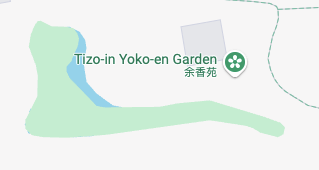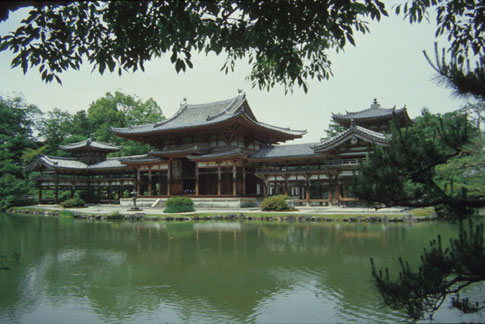
Taizo-in was founded in 1404 as the oldest subtemple of of the Myoshin-ji complex. Its most famous garden is a dry landscape attributed to the painter Kano Motonobu (1475 1559), a resident of the monastery. Understated and difficult to appreciate in photographs, its dry stream bed and associated rocks and plantings are thoroughly in the spirit if not the actual composition of Muromachi landscape painting, a tradition closely associated with this and other Rinzai Zen monasteries in Kyoto. Among other gardens located within the Taizo-in complex is an impressive stream-and-pond garden of the twentieth century, designed by Nakane Kinsaku. In its basic elements it is a larger, "wet" version of the dry garden attributed to Kano Motonobu. Choose a view point from the map or click Tour the Garden for more views of both of these gardens.
Taizo-in was founded in 1404 by the daimyo Hatano Shigemichi and is the oldest subtemple of the Myoshin-ji complex. Its most famous garden is a dry landscape attributed by some authorities to the painter Kano Motonobu (1475-1559), who lived at Myoshin-ji for a number of years. It is visible from the southern and western interiors of the abbot's residence. Understated and difficult to appreciate in photographs, its dry stream bed (the Japanese term is karenagare) and associated rocks and plantings are thoroughly in the spirit if not the actual composition of Muromachi landscape painting, a tradition closely associated with this and other Rinzai Zen monasteries in Kyoto. The Taizo-in precinct contains other gardens, including an impressive stream-and-pond garden of the twentieth century, designed by Nakane Kinsaku.

